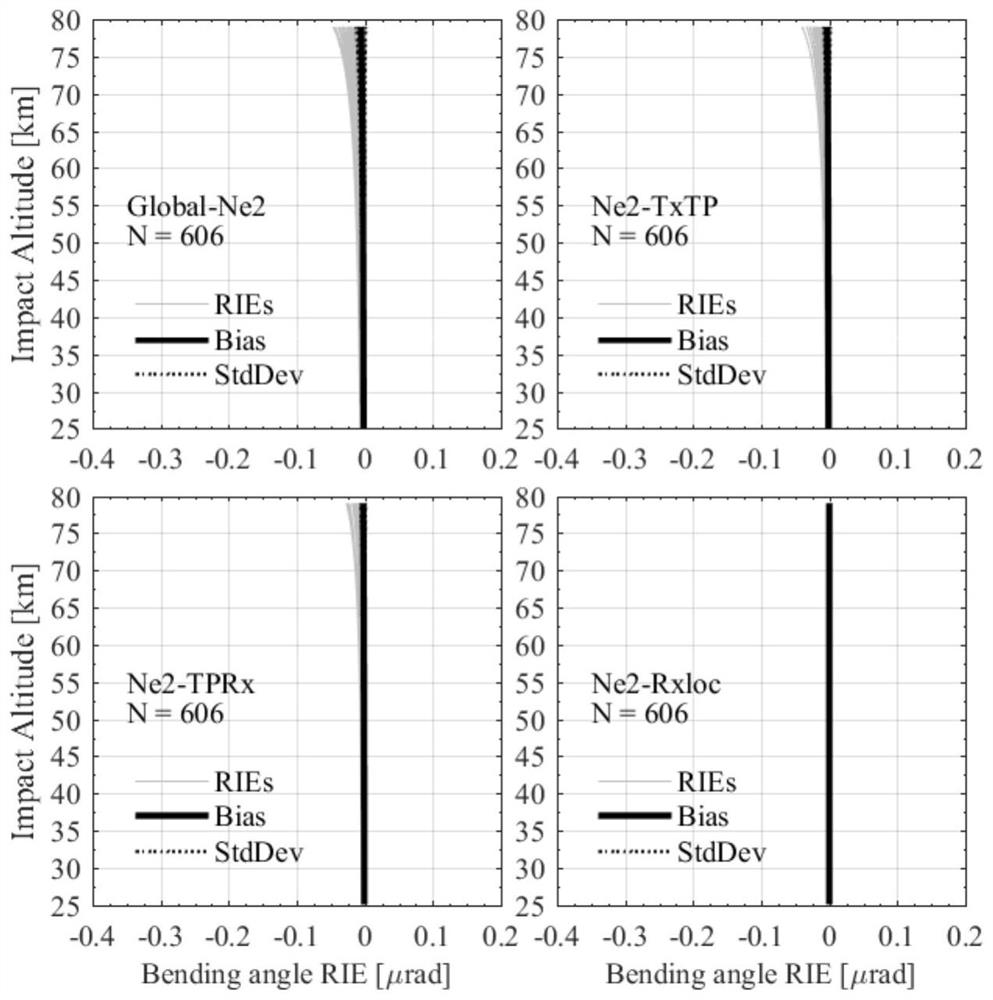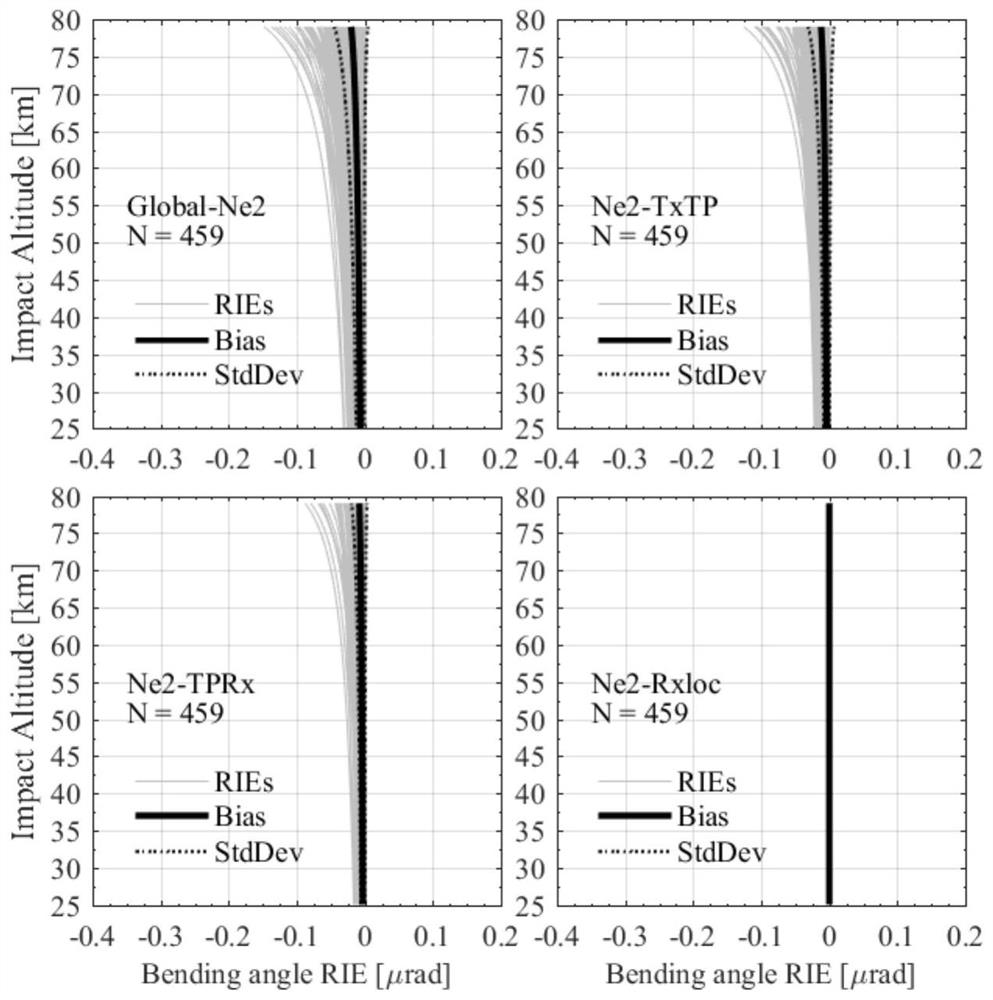GNSS occultation ionospheric residual correction method and system based on ionospheric electron density
An ionospheric residual and electron density technology, applied in radio wave measurement systems, satellite radio beacon positioning systems, instruments, etc., can solve problems such as poor reliability and accuracy, and achieve the effect of improving accuracy and weakening influence
- Summary
- Abstract
- Description
- Claims
- Application Information
AI Technical Summary
Problems solved by technology
Method used
Image
Examples
Embodiment 1
[0043] Such as figure 1 As shown, Embodiment 1 of the present invention provides a GNSS occultation ionospheric residual error correction method based on ionospheric electron density. The method takes into account the asymmetry of ionospheric electron density. The method includes the following steps:
[0044] S11. Obtain GNSS occultation geometric data and ionospheric data through data preprocessing;
[0045] In this embodiment, the GPS-MetOp occultation observation data and the vTEC maps data products issued by the IGS station are used for data processing and model verification. The basic input parameters mainly include GNSS occultation geometric input parameters, as shown in Table 1:
[0046] Table 1 Basic input parameters of the bending angle ionospheric residual correction model
[0047]
[0048] S12. Determine the ionospheric input parameters according to the observed data and the ionospheric model;
[0049] Comprehensively using the basic input parameters of the model...
Embodiment 2
[0066] Embodiment 2 of the present invention provides a GNSS occultation ionospheric residual correction system based on ionospheric electron density, said system comprising:
[0067] The preprocessing module is used to preprocess GNSS occultation raw observation data and ionospheric vTEC maps data, and obtain GNSS occultation geometric data and ionospheric data;
[0068] The electron density calculation module is used to calculate the electron density profile at the position of the ionosphere puncture point on the "incoming ray" and "outgoing ray" sides based on GNSS occultation geometric data, ionospheric data and three-dimensional NeUoG ionospheric model;
[0069] The residual correction module is used to calculate the curved angle ionospheric residual profile based on the GNSS occultation geometric data and the electron density profile.
Embodiment 3
[0071] Embodiment 3 of the present invention provides a computer device, including a memory, a processor, and a computer program stored on the memory and operable on the processor. When the processor executes the computer program, the computer program is implemented. Example 1 method.
PUM
 Login to View More
Login to View More Abstract
Description
Claims
Application Information
 Login to View More
Login to View More - R&D
- Intellectual Property
- Life Sciences
- Materials
- Tech Scout
- Unparalleled Data Quality
- Higher Quality Content
- 60% Fewer Hallucinations
Browse by: Latest US Patents, China's latest patents, Technical Efficacy Thesaurus, Application Domain, Technology Topic, Popular Technical Reports.
© 2025 PatSnap. All rights reserved.Legal|Privacy policy|Modern Slavery Act Transparency Statement|Sitemap|About US| Contact US: help@patsnap.com



